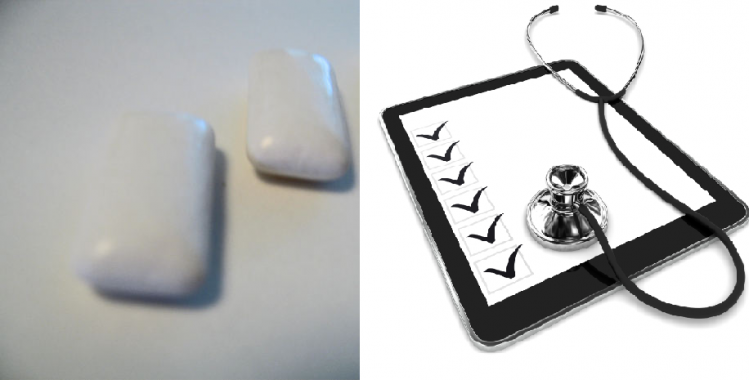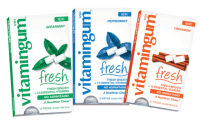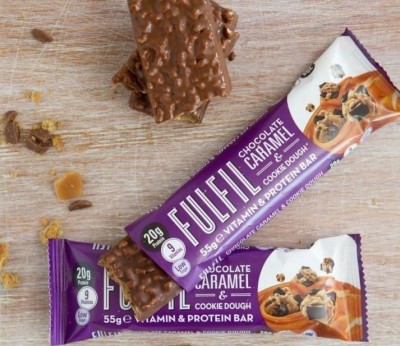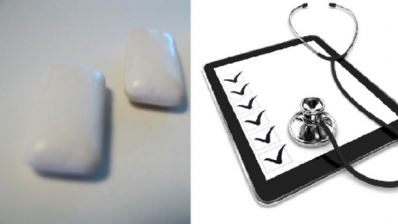SPECIAL EDITION: HEALTHY AND FUNCTIONAL CONFECTIONERY
Big potential, sticky challenges: Incorporating active ingredients into chewing gum

In this special edition, ConfectioneryNews explores different methods to incorporate functional ingredients into gum, flavor masking and the stability of various sweeteners.
Buccal absorption: Chewing gum’s advantage
Thomas Jahn, marketing manager for private label gum maker Fertin Pharma said the prospects for functional ingredients in gum were great.
“We can put in any active ingredient. There are of course some that are problematic – but most, like vitamins, minerals and supplements, we can include.”
He added that chewing gums had a big advantage over other delivery systems because active ingredients were delivered locally. Functional ingredients in gum are absorbed in the buccal cavity in the mouth rather than the gastrointestinal system, meaning the effect takes a few minutes compared to 30-40 minutes.
Traditional processing
Some companies are choosing to use pharmaceutical-type compression to add active ingredients, which they claim helps the release; while others feel traditional gum manufacture is enough.
Regis J. Nesbitt, VP of marketing & sales at Vitaball, which produces vitamin enriched gum through its Vitamingum brand, said: “We do it the traditional way of making gum,” explaining that it gives a better taste and chew.
Nesbitt claimed that Vitaball’s patented process based on traditional methods released active ingredients as effectively as a compressed gum, and said the company planned bioavailability testing to prove efficacy.
“But compressed gum has come a long way. They’ve done a better job with the taste profiles,” he added.
Compression
Private label gum maker Fertin Pharma uses a patented direct compression tableting process, similar to that used in production of bi-layered tablets. The process produces bi-layered compressed chewing gum with a gum layer and a thin mint layer.
“Although we haven’t performed comparative release tests on all active ingredients, we have performed enough that show an improved release with compressed vs. extruded chewing gum, “ said Thomas Jahn, marketing manager for Fertin Pharma.
He said that compression was a dry and cool process that increased survival of active ingredients versus traditional extruded chewing gum manufacturing.
He added: “All components are dry, powder ingredients, and when active ingredients are incorporated, they are added loosely into the powder mix for the given layer - and not incorporated into the sticky ‘dough’ as is the case for extruded gum. This means that the actives can be released more freely when consumed.”
Dealing with fat soluble ingredients
Fat soluble ingredients such as vitamins E, A and D and folic acid can be more difficult to release in gum.
Vitaball adds these ingredients to the gum coating because otherwise they will become lost in the gum matrix.
Similarly, Fertin Pharma chooses to add fat solubles to the mint layer of its compressed gums, as they tend to stick to the gum base if put in the gum layer.
Active ingredients in the coating are released much faster as the coating is first thing to break. Ingredients in the center take longer, perhaps around 5-10 minutes to release.
Producers often use overages for fat soluble ingredients which can range from 5-30% depending on the ingredient. This ensures there’s enough in the formulation to have an effect and to meet label declarations.
Problem ingredients: herbal extracts, and omega 3
Jahn said: “Many active ingredients especially herbal extracts have a very bitter taste and in some cases it’s hard to mask, so maybe we have to lower the dosage.”
He added that omega 3 was very oily making it difficult to maintain stability. Adding iron to gum can also be problematic as it affects the taste when chewing for a long time, he said.
Sweetener support
Fertin Pharma tends to use xylitol and sorbitol as bulk sweeteners as well as high intensity sweeteners like aspartame and Acesulfame-K.
“In some incidences we see that particular sweeteners are better suited to certain active ingredients,” said Jahn.
Some active ingredients aren’t particularly stable and require steadier bulk sweeteners such as isomalt and maltitol rather than xylitol or sorbitol, which tend to have a shorter stability.
Jahn said that his firm was looking into sweetening functional gums with stevia, but finding a bulk sweetener considered ‘natural’ to support it was tough, and xylitol didn’t make the grade.











